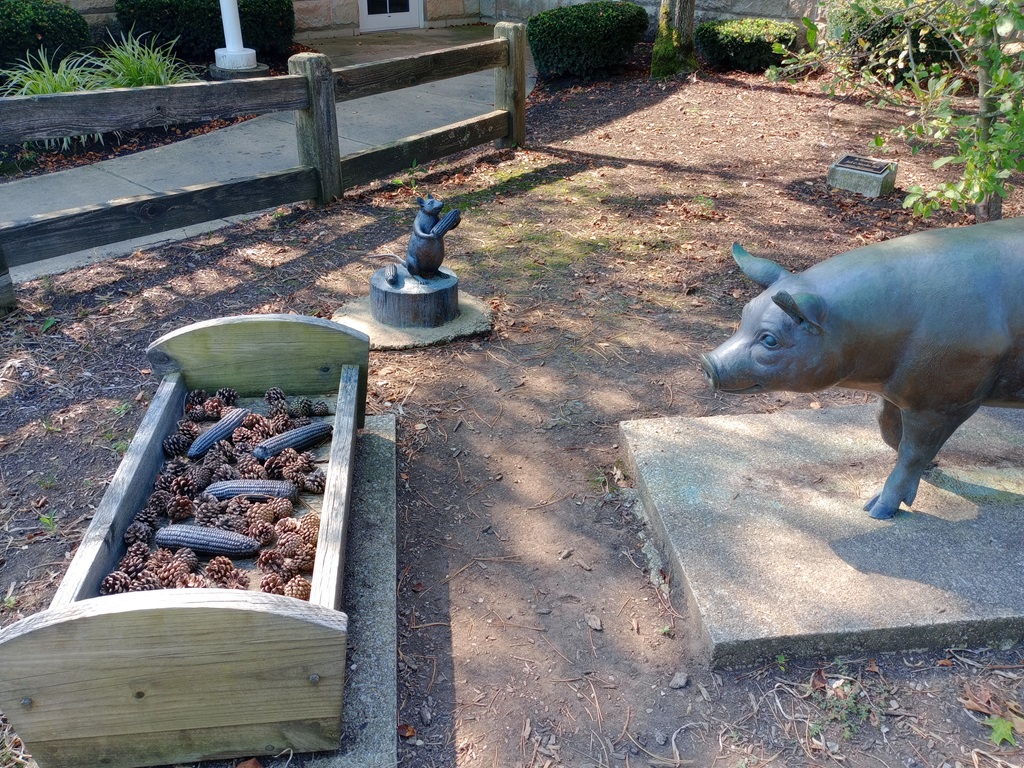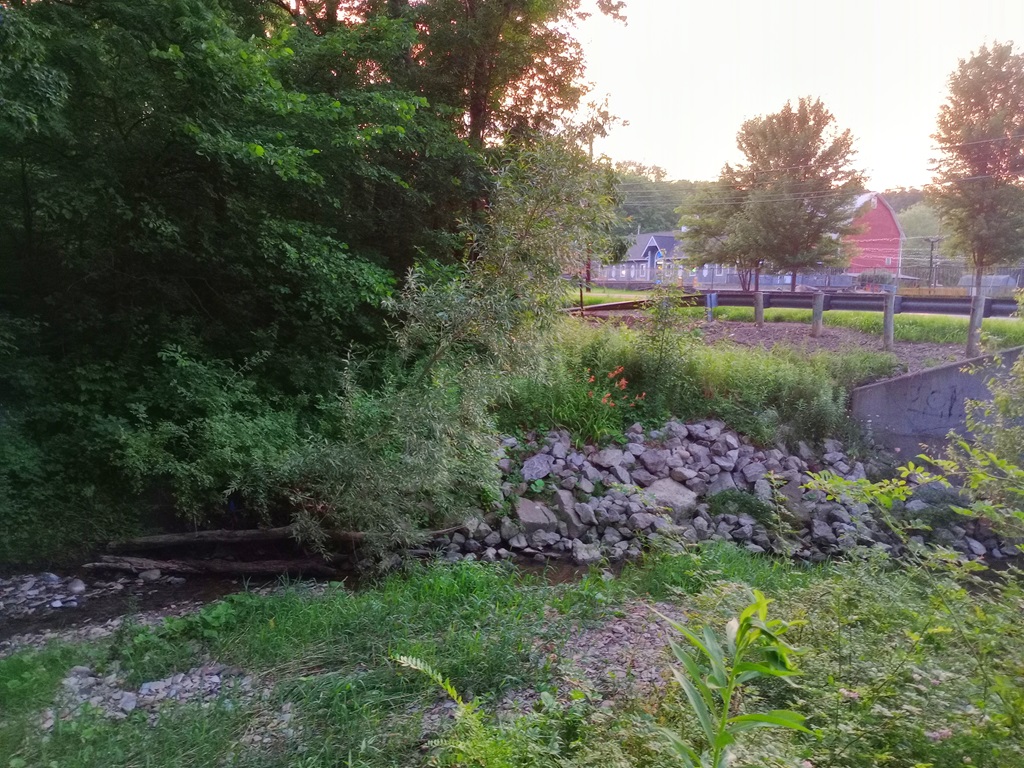I’ve always known that half of the local library looks like a barn – cute, and keeping with the rural roots of the community. I never really questioned the aesthetic. Anya has been volunteering at the library a few days a week this summer. We took a walk around the property checking it all out after her shift one day — yup, half of it looks like a barn. But!
At the corner of the building, they have sculptures. A pig, a mouse, a goose, really realistic corn.
And an archway with a metal “spider web” that says terrific … the entire area is designed after Charlotte’s Web!










